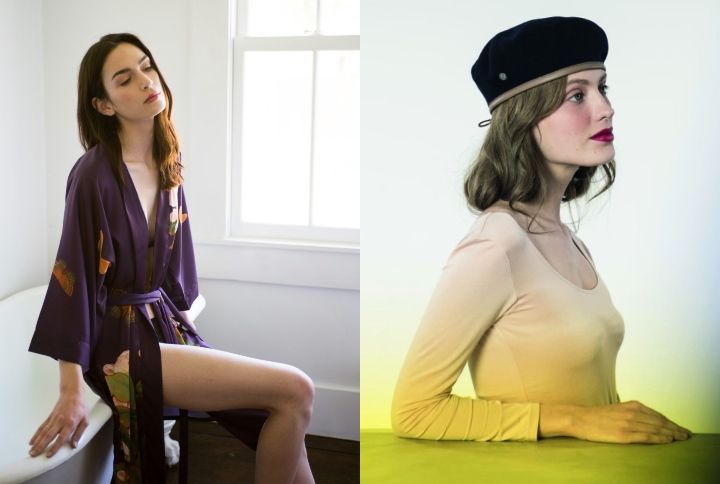Fashion trends are basically a product of a recycling-like process. Every few years, a new trend gains sudden prominence, which, more often than not, has been popular in the past. For instance, the ’70s bootcut jeans, vintage-inspired ruffles, shoulder-pads and so on. While styles have evolved over the years, their origin goes way back in time. Each one with its fair share of questionable appropriation or appreciation. In the process of styling these fashionable garments, we forget their true origin, how they came about, who designed the style and so on.
Those who appreciate fashion see it as a form of art because clothes often tell a story. Back in the day, each culture had its unique style of clothing and particular accessories that had some connection with their traditions. The way they were made, the materials used, and the method; it all stemmed from these traditional practices. Over time, a few sartorial aspects of these cultures became famous and made their way into the present times, as well. Hence, we decided to dig deep into the history of some of these staples that have become classics and where they originally came from. All across the globe, these garments are worn as statement pieces but most of us are unaware about the story behind it. So, scroll ahead for a quick lesson on the history of these staples.
Ahead, we list out 6 popular staples along with their origin:
1) Kimono
The cultural origin of Kimonos is no rocket science, this traditional garment is the national dress of Japan. Japanese women wear a Kimono for special occasions and festivities. The composition of soft textiles such as silk, its delicate wide sleeves, thread-work, floral prints, high collars and the slinky-fit are all the elegant details of this garment. However, over the years, the traditional fit of Kimonos has paved the way for Kimono-inspired blouses and cover-ups. Modern-day silhouettes are very often worn as cover-ups and also come printed with blooms. These beautiful pieces are delicate and elegant and are a common source of inspiration for modern-day designers and high-street stores.
2) Kilt Skirts
Originating from the Highlands of Scotland, the Kilt is a skirt-like garment made of tartan which features a checkered pattern. This pattern is more popularly known as plaid and the fabric was used for its water-resistant composition. Factors like the climate, health and comfort made Kilts a traditional garment worn by men. Thanks to the Scottish, men in skirts became a thing! Unfortunately, this didn’t stick around for too long. However, soon, women picked onto the pattern of this skirt and it became popular as plaid skirts. High-end brands such as Burberry emulated this pattern into their designs and it became their signature print as well. Variations of checkered skirts inspired from the Kilt continue to be a popular outfit choice till date (let’s not forget school skirts). The Kilt is a native garment that is associated with the whole of Scotland to date.
3) Corsets
This sexy staple was initially worn as inner-wear before it became acceptable to wear as outer-wear, as many do today. Dating back to the 15th century, corsets were used to achieve the ideal hourglass figure in women. This stiff garment goes over your torso and has laces on the front or back to adjust the fit according to your desired body shape. Corsets succeeded in giving women that desired hourglass figure but they came at a price, which was high level of discomfort. But because of its look, it became a wardrobe essential for European and British women.
The many features of the corset such as lacework, ability to cinch the waist and accentuation of the chest made it a sensuous clothing item. Subsequently, inspiring a lot of lingerie and tops in recent times. Many evening gowns and wedding gowns also incorporate the niche trend of corset-style bodices in their design.
4) Poncho
South America’s poncho was brought into existence by the pre-Inca culture in 500 B.C.E. This cape-like garment was brought to life by weaving and then embroidered on or hand-painted with cultural artwork. Poncho was used to keep people warm during the colder seasons. Moreover, the different patterns on it had a certain message of denoted hierarchy. For instance, people of a higher authority sported the diamond-patterned poncho. As time passed, this evolved into a more European style along with changes in the production techniques as well. Now, we see them worn as versatile outerwear, raincoats or even as stand-alone tops. Ponchos often go in and out of fashion, but they are recognised as statement piece all-over.
5) Khadi
When it comes to inspiring fashion, India is never far behind. Rich in traditions, India’s signature fabric—Khadi, has inspired several designers for their modern-day collections. The fabric has a deep-rooted significance linked to it as it symbolises India’s fight for freedom. Khadi became crucial during Mahatma Gandhi‘s time as a national movement to boycott foreign goods. The Khadi movement promoted work in villages and independence amongst many. The sturdy texture, comfort and warming and cooling properties are key elements of the fabric.
The production process of spinning and weaving is not an easy task, hence adding even more value to this technique. This has now evolved into a process with a mix of traditional and modern production methods. Moreover, many high-end designers such as Sabyasachi Mukherjee, Ritu Kumar and Rohit Bal used the Khadi technique for their designs and to promote work amongst weavers and spinners in rural areas.
6) Beret
A highly popular hat till date is the beret. They’re composed of a soft material and have a shape of a flat crown hat. More popular now than ever due to Netflix’s Emily In Paris, berets initially became famous in the 15th century amongst French farmworkers. Berets are also a part of the military uniform in many parts of the world (the Indian military as well). In addition to this, this fashionable accessory is also associated with the art culture of France and the Parisian lifestyle. Currently, we see them in several different designs and colours, glorified with various elements. If one wants to emulate the French look, it is incomplete without this round hat. The beret is now a symbol of France and its couture fashion.
Which is your favourite pick of the above cultural trends? Let us know in the comments below!
Don’t forget to follow @missmalinifashion on Instagram for more updates.

